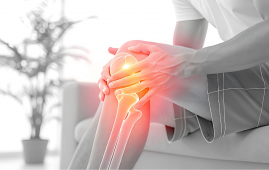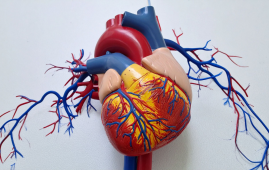

Atrial remodeling, one of the most prevalent types of cardiac arrhythmia, causes structural and electrophysiological changes in the heart of patients. A multidisciplinary study led by researchers at the Centro Nacional de Investigaciones Cardiovasculares (CNIC) introduces a new method for evaluating these changes. Based on the simultaneous evaluation of electrical and mechanical (contractile) activity in the cardiac atria during atrial fibrillation, a new diagnostic approach was developed. Published in Nature Communications is the study.
Study leader David Filgueiras explained that until now, “this was an unmet challenge,” because on the one hand, “the available technology did not allow the integration of both types of information to provide a more complete evaluation,” and on the other hand, “during atrial fibrillation, the contractile movements of the atria are of low intensity, and measuring them is technically challenging.”
An irregular and frequently very rapid heartbeat known as atrial fibrillation can lead to the development of blood clots in the heart, raising the risk of heart failure, stroke, and other issues. Around 700,000 people in Spain and 10 million people overall are thought to have atrial fibrillation.
Atrial fibrillation is currently categorized based on how long the patient has experienced the arrhythmia. Nevertheless, explained Dr. Filgueiras, who leads the Advanced Development in Arrhythmia Mechanisms and Therapy group at the CNIC and is a cardiologist at the Instituto de Investigación Sanitaria del Hospital Clínico San Carlos (IdISSC), “this temporal classification provides no information about a patient’s extent of atrial remodeling, an especially important parameter in the first months of the condition when the underlying disease processes can progress at different rates.”
According to Dr. Filgueiras, “The importance of this new diagnostic method is its ability to provide a personalized assessment of an individual patient’s degree of atrial remodeling, independently of the clinical classification based on temporal criteria.”
The three first authors on the study are Daniel Enríquez Vázquez, of the Complejo Hospitalario Universitario in A Coruña and a member of the Spanish cardiovascular research network (CIBERCV), and CNIC scientists Jorge G. Quintanilla and Alba García Escolano. Dr. Enríquez Vázquez highlighted that “on a clinical level, the results show that electromechanical dissociation in patients with atrial fibrillation is a solid indicator of disease progression and of the need to take urgent steps to return these patients to normal rhythm in an efficient and stable manner.”
Team members from the Hospital Clnico San Carlos, Hospital Universitario Central de Asturias, Hospital de la Santa Creu i Sant Pau, Complejo Hospitalario Universitario de A Corua, Universidad Complutense de Madrid, Universidad Politécnica de Madrid, Universidad Autónoma de Barcelona, University of Connecticut, and the CIBERCV collaborated with the team led by Dr. Filgueiras. In order to enable a tailored assessment of the state of the pathological alterations linked to the evolution of atrial fibrillation, this team of national and international experts has been collaborating for the past ten years to integrate electrical and mechanical cardiac data.
This was accomplished by the varied team using a multidisciplinary strategy.
In the initial stage, physicists and engineers came up with the best plan for combining the electrical and mechanical data. They came up with the idea of measuring electrical activity using surface electrocardiography and mechanical activity with Doppler imaging, a noninvasive technique that offers information on atrial tissue movements.
Both of these methods are simple to employ in the clinic since they are noninvasive and may be carried out during a transthoracic ultrasonography examination, a common investigation of the form, function, and some interior structures of the heart.
The CNIC Proteomics Unit and clinical cardiologists collaborated with experts in biology, biotechnology, biochemistry, and biomedical engineering during the second phase. During this phase, experimental experiments were done to correlate the data gleaned from the novel strategy with the underlying pathological alterations in atrial tissue. The principles behind electrical and mechanical remodeling throughout the course of atrial fibrillation were revealed using computer simulations and new, sophisticated mapping techniques that were developed using this information.
In order to investigate the predictive usefulness of concurrent electrical and mechanical examination of the atria in patients with this kind of arrhythmia, the final phase involved a multicenter prospective study with 83 patients at an early stage of atrial fibrillation.
Early in the course of the disease, the experimental and clinical results showed an imbalance between electrical and mechanical (contractile) activity in the atria. The two factors separate as a result, leading to a situation known as atrial electromechanical dissociation, in which the electrical activation cannot keep up with the contractile activation. Although the rate of this dissociation varies depending on the patient, it is typically noticed within the first two to three months following an uninterrupted atrial fibrillation episode.
A key advantage of the new approach is that atrial electromechanical dissociation is identified before the appearance of overt clinical signs of structural atrial remodeling. “The use of this new diagnostic approach allows early characterization of the underlying remodeling in patients with atrial fibrillation,” said Dr. Filgueiras. “The study shows that it is possible to integrate electrical and mechanical data from the atria of patients with atrial fibrillation to obtain personalized prognostic information about the clinical progression of the disease.”
Nicasio Pérez Castellano, of the IdISSC, and David Calvo Cuervo, of Hospital Central de Asturias and currently a member of the IdISSC, emphasized that “in addition to the results obtained, a major strength of this new approach is its noninvasive character, which will greatly ease the management of patients with atrial fibrillation.”
Julián Pérez Villacastín, a clinical collaborator on the study at Hospital Clínico San Carlos, CIBERCV and currently president of the Spanish Society of Cardiology, added that “this research and its clinical implementation will allow an increasingly personalized management of patients with atrial fibrillation.”
more recommended stories
 Protein Pair Guides Chromosome Alignment in Mitosis
Protein Pair Guides Chromosome Alignment in MitosisKey Points A joint research team.
 Ultra-Processed Foods in Mediterranean Youth: Risks
Ultra-Processed Foods in Mediterranean Youth: RisksThe Mediterranean region is widely recognized.
 Intensive mind-body retreat rapidly alters brain function
Intensive mind-body retreat rapidly alters brain functionAn intensive mind-body retreat combining meditation,.
 Longevity Gene May Extend Lifespan Without Strict Diets
Longevity Gene May Extend Lifespan Without Strict DietsThe search for safe and realistic.
 Cholesterol-Lowering Drugs May Help Reduce PFAS Levels
Cholesterol-Lowering Drugs May Help Reduce PFAS LevelsPer- and polyfluoroalkyl substances (PFAS) continue.
 Citrus and Grape Compounds Help Prevent Type 2 Diabetes
Citrus and Grape Compounds Help Prevent Type 2 DiabetesA new clinical trial highlights the.
 Personalized Pain Care Transforms Parkinson’s Treatment
Personalized Pain Care Transforms Parkinson’s TreatmentNew UniSA research underscores the urgent.
 Genetic Diversity Explains Obesity Risk Differences
Genetic Diversity Explains Obesity Risk DifferencesCross-ancestry Study Identifies Novel Obesity Genes.
 Meniscal Tear and OA Pain Improved by Home Exercise
Meniscal Tear and OA Pain Improved by Home ExerciseHome Exercise Proves Effective for Knee.
 AI ECG Model Outperforms Standard STEMI Triage
AI ECG Model Outperforms Standard STEMI TriageNovel AI ECG Model Outperforms Standard.

Leave a Comment